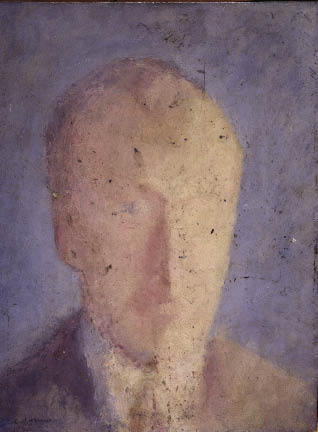Andrew Lambirth on the special relationship between the artists Zoran Music and Ida Barbarigo that is explored in an exhibition that shows their work together for the first time in more than half a century
At the Estorick Collection, a modest north London townhouse, there is until 12 June a most engaging exhibition devoted to two artists, husband and wife, whose work is not particularly well known in this country, though both are recognised and celebrated internationally. Ida Barbarigo (born Venice 1925) first met Zoran Music (1909–2005) at an exhibition of his paintings in Trieste in the spring of 1944. Their burgeoning friendship was interrupted when Music was arrested by the Nazis, who first accused him of spying and then wanted to recruit him. He refused and was deported to Dachau.
Zoran’s horrific experience at Dachau scarred his mind and his creative imagination, and was only to surface years afterwards in his work. As he said much later, ‘Even now the eyes of the dying are still with me.’ In 1945 he was able to return to Venice (where Ida was living), but it was not until 1971 that he began the great series of images collectively entitled ‘We are not the last’ about his concentration camp experiences. He always said that without Dachau he would have been an illustrative painter: internment made him go to the heart of things.
Ida, meanwhile, had been pursuing her own artistic trajectory. From a very early age, she was haunted by a sense of destiny — that she would grow up to be another Leonardo or Christopher Columbus. After toying with the idea of becoming a musician (she learnt classical guitar), or an architect (she made very precise drawings for an architect uncle), Barbarigo decided to capitalise on her innate talent for drawing and painting.








Comments
Join the debate for just £1 a month
Be part of the conversation with other Spectator readers by getting your first three months for £3.
UNLOCK ACCESS Just £1 a monthAlready a subscriber? Log in